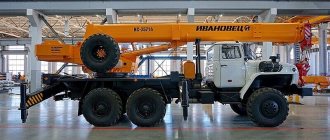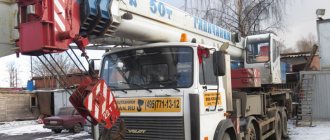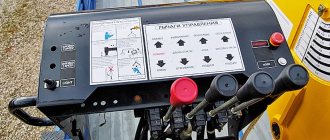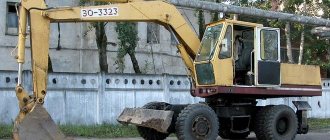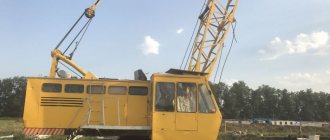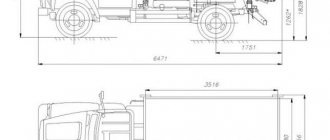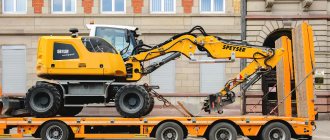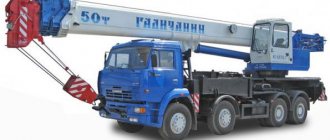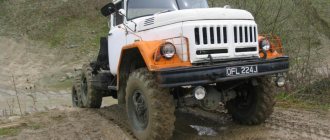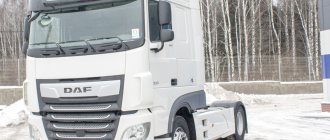SKG 401 crawler cranes are stronger and more stable over long distances. The SKG crawler crane is the best choice if the job requires a long reach or work in a vertical direction. The tracks allow it to move virtually anywhere on the job site, even when there is load on the line. Our store gives you the opportunity to buy a SKG crawler crane at an affordable price with fast delivery.
Like any other significant investment, purchasing a crane should not be taken lightly. Whether purchasing a crane is the right purchasing decision depends on the needs of your business. If you are thinking about purchasing a faucet, consider the following factors:
How often will it be used? If your business uses a crane frequently and constantly, purchasing one may be a good option. However, if there are often long periods of time between jobs that require lifting work, it may be more economical to hire a crane instead. This is because, unlike when you hire a crane, when you buy a crane you will still be paying for its storage and maintenance during slow periods when it may not be used very much, if at all.
Description and purpose
Cranes under the DEK brand on crawler tracks are produced by a mechanical plant in Chelyabinsk. Their history begins in 1956, when the first DEK-20 crane was produced, capable of handling loads weighing 20 tons. Since then, more than 12 thousand machines have left the factory sites, which have become the calling card of ChMP.
The quality and reliability of units bearing the DEK brand are not inferior to imported models, and in some characteristics and equipment they are superior to them.
Thanks to constant improvement and competitive prices, they are popular among consumers and are used in almost 50 countries around the world.
Today the line of crawler cranes includes new generation machines:
- with index 251, lifting loads up to 25 tons;
- units with indexes 323, 321, 361, 631, 401, which are capable of handling 32-63-ton structures;
- DEK-1001, for which the maximum working load is 100 tons.
The advantages of DEK cranes:
- ability to: move with maximum loads on the hook;
- work effectively at temperatures -40…+60°С;
- use for high-precision work;
multifunctionality, which is ensured by changing equipment; low costs for the technological process, maintenance and operation; quick preparation for work.
Areas of application for crawler cranes:
- loading/unloading structures, materials;
- driving piles;
- laying the foundations of houses, administrative buildings, industrial structures during construction;
- construction of bridges, railways, roads, overpasses;
- installation and dismantling of large elements and industrial equipment;
- loading of scrap metal;
- excavation;
- work in ports during unloading/loading.
Design and operational features of cranes
Construction machines and equipment, reference book
Category:
Lifting cranes
Design and operational features of cranes
Crawler cranes make up 13% of the construction crane fleet, and 17% of jib self-propelled cranes.
Crawler cranes are manufactured with a lifting capacity from 16 to 150 tons, and the main share falls on cranes of 25-40 tons.
Cranes of the second (MKG, DEK) and third (SKG) generations with improved technical and operational indicators are being mastered.
In addition to traditional boom equipment, a number of models use special shortened booms (MKG-25BR, MKG-25.01, MKG-28, MKG-30, SKG-40A, SKG-40/63, SKG-401), providing an increase in lifting capacity with a corresponding decrease in height lifting, as well as the ability to use in cramped conditions.
VNIImontazhspetsstroy and a number of installation organizations have developed and implemented technical solutions that expand the lifting capabilities of crawler cranes: bracing of crane booms, their connection; resting crane booms on stands.
Crawler cranes, due to their low specific pressure on the ground (0.6-2.4 MPa), have high maneuverability on unpaved sites and roads, as well as maneuverability. The developed support contour in the form of tracked carts allows you to move within the installation areas with a load on a hook, the mass of which is up to 80% of the maximum lifting capacity (across the tracks) and up to 100% (along the tracks) with the main boom. When equipped with tower-boom equipment, the reduction in lifting capacity when cranes move, depending on their characteristics, reaches from 70 to 25%.
All crawler cranes, with the exception of the 16- and 125-tonne ones, have an AC electric drive that can be powered from an external power supply. The SKG-401 and SKG-631 cranes use a power unit mounted on a trailer to the crane chassis. When transporting by road over a distance of more than 10 km, crawler cranes with a lifting capacity of up to 25 tons are not dismantled, and for larger lifting capacities the boom is removed. Transportation by rail is carried out in accordance with the instructions of the Ministry of Railways, which stipulate the requirements for fitting into the 1-T gauge.
The MKG-25.01 crane with a lifting capacity of 25 tons, electric, was created on the basis of the MGK-25BR crane in order to obtain improved characteristics.
The crane (Fig. 21.4) is equipped with a main boom length of 16.8 m versus 13.5 m for the MKG-25BR crane, which ensures an increase in the lifting height of the main and auxiliary hooks. A new, more powerful power plant was used. The structural weight of the crane has been reduced.
The DEK-252 crane (Fig. 21.5) with a lifting capacity of 25 tons is equipped with replaceable booms 19 long; 22.75; 24; 27.75; 32.75 m. An uncontrolled jib 5 m long can be installed on each boom. The DEK-252 crane is equipped with tower-jib equipment (BSO), a tower 19.24 and 27.75 m long with controlled jib 10, 15 and 20 long m. Power supply is from its own power plant and from an external network with a voltage of 380 V. With extended booms and with BSO, the crane can operate on a site with a slope of no more than 2 and G, respectively. The cranes can be equipped with a grab with a capacity of 2.5 m.
- Here and further in the section the maximum lifting capacity with the smallest hook reach is indicated. For larger flights it will be smaller. Graphs of the dependence of the crane's lifting capacity on the hook reach are shown next to the crane diagrams.
The crane is equipped with two standardized cargo winches for the main and auxiliary lifts. In the BSO version, one of the winches is used to lift the load, the second is used to lift the steerable jib. The turning mechanism is equipped with a two-speed electric motor and a torque limiting clutch, which ensures stable operation at a reduced speed.
Power is supplied from an external network using a flexible cable 200 m long, wound onto a drum.
The mechanisms placed on the turntable are covered by a single body. An air conditioner is attached to the control cabin, from which cooled, purified air is supplied through a metal hose to the control cabin with a DUR-15 remote control. The cabin is made as a separate unit, heating is electric. An anemometer AP-200 is installed on extended booms and BSO. The crane is transported with or without a 14m main boom on a 40t trailer with crawler tracks mounted across its platform.
Crane RDK-250.3 (Fig. 21.6) with a lifting capacity of 25 tons. The set of working equipment includes booms with a length of 20.3; 27.5 and 35.3 m and tower-boom equipment consisting of a tower with a height of 12.5 and 27.5 m and steerable jib 10,15 and 20 m. The boom ends in a cap on which an unguided jib 5 m long can be attached The main lift winch is a two-engine multi-speed with a planetary gearbox, providing a wide range of speeds, including landing.
The drive of the tracked vehicles is independent of its own electric motors, the rotation from which is transmitted to the final drives using cardan shafts.
Rice. 21.4. Tracked gear MKG-25.01 with the main boom and its load characteristics: a - for a 16.8 m boom with a jib; b - for a 21.8 m boom with a jib; c - for a boom of 26.8 m; g - for a boom of 31.8 m; d - for a boom of 36.8 m
The development of crawler cranes of the RDK series, mastered by the Zemag-Zeiss plant (Germany), is carried out in the direction of increasing their capacity and further structural and technological improvement.
The RDK-400 crane has a lifting capacity of 40 tons. The crane is equipped with booms 16–46 m long in increments of 5 m. An unguided jib 6 m long can be installed on each boom.
The crane has tower-boom equipment, consisting of a tower-boom with a height of 16-31 m and steerable jib jibs 10, 15, 20 and 25 m long. A safety device is provided for the BSO and booms against tipping over. The main lift cargo winch is a twin-engine one with electric motors with phase and squirrel-cage motors and a planetary gear, an intermediate gear and a gearbox connected to a drum. The auxiliary lift cargo winch is similar in design to the main lift winch. Both winches are located outside the hood, which eliminates the possibility of ropes passing through the roof of the engine room. The turning mechanism is located in front of the cargo winches. The boom winch is mounted under the hood, single-engine, and equipped with a rope handler.
The mechanism movement drive consists of two electric motors and gearboxes connected to them, which are located on one side of the running frame. The movement from the gearboxes is transmitted via cardan shafts to the final drives of the tracked vehicles, located on the other side of the frame.
Rice. 21.5. Crawler crane DEK-251 and its load characteristics: a - for a 14 m boom; b— for a 14 m boom with a jib; c - for jib; g - for a 14 m boom with a grab
The crane is equipped with a load limiter of the “Robotron” type.
The design of the crane allows you to receive electricity from your own diesel generator station or from an external power source via a flexible cable.
The crane is transported by rail disassembled: the rotating part with the running frame, tracked carriages and boom equipment. Transportation on a trailer with a carrying capacity of 60 tons is carried out assembled without working equipment.
The next standard size is the RDK.630 crane under development with a lifting capacity of 63 tons.
These jib cranes use high-strength pipes, a hydraulic drive on the slewing mechanism and an electronic load limiter of the Robotron type.
In the future, it is planned to create a fully hydraulic crane.
Cranes SKG-401 and SKG-631 (Fig. 21.7) with a lifting capacity of 40 and 63 tons, in special versions 63 and 100 tons, respectively. With main booms, the cranes can work in wind regions I-VII, and with tower-boom equipment in I —III regions.
Rice. 21.6. Crawler crane RDK-250-3:1—boom version; 2— tower-boom version
All booms can be equipped with a non-steerable jib. The change in the reach of the controlled jib of the tower-boom equipment is carried out by the auxiliary lifting cargo winch. The cargo and jib winches of each crane use ropes of the same diameter. The crane mechanisms are controlled using cam controllers and buttons.
Crawler bogies are multi-supported and have independent drives for travel mechanisms. The main lift winch is equipped with two electric motors connected by a differential, which provides three speeds for lifting the load.
The cranes are powered by electricity from an external network or from their own power plant outside the crane, on a pneumatic trailer. This allows, if an external power source is used, to store the unit indoors and increase its service life and its safety.
Cable reels and plug connectors are used to change the length of cables depending on the length of the boom and jib.
Based on the SKG-401 crane, the SKG-505 crane with a lifting capacity of 50 tons was created, and with an additional counterweight of 8.44 tons, the lifting capacity reaches 63 tons. The boom tower equipment uses a boom length of 37 m instead of 32 m. Tractor-type caterpillar belts are used.
The KS-7163 crane (Fig. 21.8) with a lifting capacity of 63 tons, in addition to the main boom, has interchangeable extended booms due to inserts of sections of 5 and 10 m: i 20; 25; thirty; 35; 40 and 45 m. Controlled jibs with a length of: 10; 20; 25 and 30 m. BSO is provided: towers with a height of 25 and 35 m. An uncontrolled jib of 15 m is attached to booms from 25 to 35 m. The change in the reach of the controlled jib is carried out with a pulley and an auxiliary lifting cargo winch. The main lifting cargo winch is driven by two electric motors.
Power is supplied from an external network using a flexible cable.
The crawler bogies are driven by two mechanisms located on a remote platform on one side of the running frame. The trolley frames rest on belts with the help of three balancers, allowing them to overcome uneven road surfaces.
The DEK-631 crane is electric with a lifting capacity of 63 tons. Using inserts, you can get extended booms of 24, 30, 36 and 42 m. They use an uncontrolled jib of 10 m. Using a boom of 36 m and steerable jib of 15; 24; 27.75 m, you can get tower-boom equipment. The permissible slope of the site is taken from 3 to G.
The lifting capacity when moving with a load on the main boom is 45-50 tons, and on extended booms with a jib - 50% of the rated lifting capacity at a given reach.
The power plant is equipped with a K-6V1M diesel engine with electric start from ST-25 and ST-26.
Rice. 21.7. Crawler crane SKG-401 with tower-boom equipment and its load characteristics for a 32 m tower for steerable jib 15.6 m (a), 20.5 m (b), 25.6 m (c), 28.3 m (d) ): 1 - hook; 2 - controlled jib design; 3 — jib rods; 4 — chain hoist rods for changing the jib reach; 5 — pulleys of the jib pulley; 6 — counterweight; 7— tower; 8, 9 - safety rods of the tower and jib
The weight of the crane during transportation with the main boom (without hook suspension) is 81 tons, and without the boom and counterweight - 57 tons.
When moving around the site, the length of the crane is 26.5 m, height is 4.3 m.
Rice. 21.9. Crawler crane MKGS-100. Electric crane MKGS-100 (Fig. 21.9) with a lifting capacity of 100 tons.
Its feature is increased mobility through the use of a new transportation scheme. The rotating part of the crane rests on the frame of a two-axle pneumatic wheeled trolley, which is connected to the lower frame of the crane using a bracket, and the supporting part of the boom is connected to the saddle device of the tractor. In this way, a road train weighing about 56 tons is created, which ensures its free movement in the traffic flow on the roads.
The crane is equipped with elongated booms due to 7 m inserts. All booms can be equipped with an uncontrolled jib 12 m long. Tower-jib equipment is provided: towers 29, 43 and 50 m long and steerable jib 19-40 m long.
The crane is equipped with a device for increasing the lifting capacity due to an additional mast and suspended counterweight up to 160 tons.
Enlarged cranes are transported along highways; mi units: rotating part and lower frame, boom sections of 14 and 7 m, tracked carriages, counterweight. By rail, the crane is transported on 5 platforms instead of 14 with the usual disaggregation into assembly units.
The MKGS-125 crane (Fig. 21.10) is electric on direct current with a lifting capacity of 150 tons. The main boom can be extended to 78 m using inserts of 7 and 14 m. All booms, except booms with a length of 22 and 71-78 m, can be equipped with unsteerable jib 12 m long.
The crane is equipped with tower-boom equipment assembled from elements of boom equipment. The tower, which is motionless during operation and has a length of 29 to 64 m (at 14 and 7 m) is installed at an angle of 3°.
Rice. 21.10. Crawler crane MKG-125:1 – controlled jib; 2 - tower; 3 — mast; 4 — counterweight; 5 — winches; 6 — rotating platform; 7 — control cabin; 8 — crawler carts
It can be equipped with a main steerable jib 26 m long, which can be extended to 33 and 40 m using inserts. The reeving ratio at the highest lifting capacity is 11, at the highest lifting height - 2. A load of 25.4 tons can be lifted to a height of 101.2 m. The crane receives electricity either from an external network to a generating group consisting of an electric motor and two DC generators, or from a diesel-electric unit. The unit is in the form of a separate block mounted on a skid frame attached to the running gear of the crane. It includes a diesel engine and an alternating current generator that powers the electric motor of the generating group.
Read more: Installation, dismantling and transportation of crawler cranes
Category: – Load-lifting cranes
Home → Directory → Articles → Forum
stroy-technics.ru
General information
| Manufacturer | Ramensky Mechanical Plant |
| Crane type | Crawler |
| Faucet index | SKG-401 |
| Factory number | 239 |
| Year of manufacture | 1990 |
| Environment in which the crane operates | |
| Lowest temperature | — 40°C |
| Highest temperature | + 40°C |
| Allowable wind speed | — for the operating state of the crane 12.7 m/s |
| — for a non-operating state of the crane 30.0 m/s |
SKG-50
The diesel-electric crane SKG-50 has a lifting capacity of 50 tons, can operate on a 380 V mains voltage. The boom length is 15 m. Using inserts, the boom length can be increased to 30, 35 and 40 m. The kit includes a head for a 15 m boom for a lifting capacity of 50 tons and a second head for installing a shunting beak for a lifting capacity of 30 tons.
Diesel-electric units are equipped with electromagnetic capture. With the smallest boom reach, the lifting capacity will be greatest. Such cranes are used during installation and loading. These devices are often used in the energy sector when they operate during the installation of units or at assembly sites.
Crane rental - an alternative solution
The cost of all modern heavy equipment is high. Its acquisition of ownership is difficult or, for financial reasons, completely impossible for small companies. You need to understand that in addition to the investment for the purchase of a crane, the expense item includes:
- exploitation,
- maintenance,
- current and major repair work,
- organization of storage space, taking into account the fact that the dimensions of the SKG-401 crane are not compact.
When purchasing such equipment, you will have to hire a specialist to service it. An alternative option to a serious financial investment is to rent a SKG 401.
Purpose
Versatility is ensured by the ability to use the machine in various fields of activity. The high technical characteristics of DEK-401 allow you to effectively and quickly cope with assigned tasks of varying complexity. This also provides for increased accuracy of work operations, a large number of standard functions and the availability of additional options, and the ability to move independently around the work site.
The technique is used for:
- construction of construction projects for various purposes;
- installation work with metal structures;
- transportation of heavy equipment of workshops and industrial enterprises;
- clearing debris after natural disasters and man-made accidents;
- performing the functions of a manipulator.
Brake control module
The MUT110.1 brake control module is designed to power the winding of a crane electromechanical brake type TKP-300 with a voltage of 110 V DC from a three-phase network with a voltage of 3×220 V AC, its accelerated (forced) activation (unlocking) and disabling (blocking) with a low-current control signal low voltage DC (24 V).
Depending on the connection diagram, the module provides a non-forced brake release mode.
Contains a circuit that constantly monitors the presence of all phases of the AC supply voltage and blocks the brake in the event of their breakage.
Key Features
- 35 mm DIN rail mount;
- operating temperature range from minus 40 to +70 °C;
- degree of protection IP10;
- monitoring the presence of power supply phases;
- modes of forced and unforced brake release;
- galvanic isolation between control and supply circuits;
- LED indicators of three-phase network health and brake unlocking;
- screw terminals for connecting wires.
SKG-63/100
The SKG-63/100 crane has a lifting capacity of 63 or 100 tons, depending on the boom equipment used. The unit is equipped with a multi-motor drive that operates on an alternating power supply of 380 V. The device is powered by current from the network or its own power plant. The machine has equipment that consists of a boom and a jib.
With a boom length of 12 m, the unit has the greatest lifting capacity - 100 tons with a lifting height of 10.7 m. If the crane has a boom length of 15.74 m, its lifting capacity will be 63 tons. Using replaceable sections, the boom can be extended.
The boom can be equipped with a 7.68 m jib for additional lift. The rotating jib has a length of 29.04 m. The jib and boom are made of pipes, the slewing support is ball-bearing. The counterweight consists of 3 parts: the main one weighing 16 tons and two additional parts weighing 13.2 and 9.2 tons.
| The SKG-63/100 crawler crane has a lifting capacity of 63 or 100 tons, depending on the installed boom equipment and the weight of the counterweight. The crane has a diesel-electric multi-motor drive operating on three-phase alternating current with a voltage of 380 V, and can be powered either from its own power plant or from an external network. The crane is equipped with tower-jib equipment, consisting of a boom (tower) and a shunting jib. During operation, the boom does not change its position and has a front prestressed brace. With a boom of 12 m, the crane has a maximum lifting capacity of 100 tons with a hook lifting height of 10.7 m; when the crane is equipped with a 15.74 m boom, its lifting capacity is 63 tons. The 15.74 m long boom is the main one for the SKG-63/100 crane. It consists of two sections; a removable head cap is attached to the end of the boom. With the help of replaceable sections, the boom can be extended to 20.84; 25.74; 30.84 and 35.94 m. The crane booms can be equipped with a 7.68 m jib for auxiliary lifting. The moor jib is 29.04 m long. With the help of replaceable sections (inserts), its length can be reduced to 16.42 m. The boom and jib are triangular in section and made of pipes. The slewing support is a double-row ball bearing. The counterweight is made of three parts: the main one - 16 tons and two additional ones - 13.2 and 9.2 tons. Crawler crane SKG-63/100 Technical characteristics of the crane SKG-63/100 | |
| Maximum lifting height with maximum lifting capacity, m | 15,1 /10,7 |
| Lifting speed at maximum load capacity, m/min | 0,7-5 / 0,43-3,27 |
| Weight with main boom, t | 85,3 / 85,6 |
| Rotation speed, rpm | 0,25 |
| Travel speed, km/h | 0,75 |
| Overall dimensions in transport position, mm: | |
| ..width over tracks | 5110 |
| ..turntable width | 3230 |
| ..track width | 800 |
| =track length | 6500 |
| ..crane height | 4300 |
| Radius described by the tail section, mm | 4570 |
| Ground clearance, mm | 450 |
| Power plant (power plant) | U34(AD-100-t/400) |
| Engine: | |
| ..brand | 1D6B |
| ..power, hp | 150 |
| Generator: | |
| ..brand | GSF-100M |
| ..power, kWt | 100 |
| Engine and generator rotation speed, rpm | 1500 |
| Average ground pressure, kgf/cm2 | |
| ..in transport position | 1 |
| ..during work | 1,6 |
| Slope of the track to be overcome by the crane, degrees | 15 |
| Kinematic diagram of the movement mechanism of the crawler crane SKG-63/100 1 - 8 - gears |
To transport the SKG-63/100 crane by rail, it is disassembled into the following parts: a rotating platform, a running frame, two crawler bogies, additional counterweights, a boom, a shunting jib, inserts in the boom and jib, a shunting jib console and an installation jib. The crane's rotating platform fits into the I-T dimensions. To transport the crane, five four-axle railway platforms are required. The SKG-63/100 crane is equipped with devices for loading the turntable onto a railway platform.
Technical characteristics of the SKG-63/100 crane with boom equipment Technical characteristics of the SKG-63/100 crane with tower-boom equipment and additional counterload 13.2 t Reach, lifting capacity, lifting height of the hook of the SKG-63/100 crane with boom equipment and additional counterweight 13.2 t and without Reach, load capacity, lifting height of the hook of the SKG-63/100 crane with tower-boom equipment and additional counterload 13.2 + 9.2 t Characteristics of the electric motors of the SKG-63/100 crane Characteristics of the gear wheels of the SKG- crane 63/100 Characteristics of the brakes of the SKG-63/100 crane Characteristics of the ropes of the SKG-63/100 crane
| Photo gallery of the SKG-63/100 crane |
| Back to the page “Cranes. Descriptions and technical specifications" |
| The author of the site would be grateful for any information and photographs of this crane. Email |
| Copyright © 2002-2010 TechStory.ru |
Load-height characteristics of the SKG-401 crane
SKG-401: main lift (main boom + inserts)
Diagram of the main hoist of the SKG-401 crane | SKG-401: main lift |
SKG-401: auxiliary lift (main boom + inserts + rigid jib)
Scheme of auxiliary lifting of the SKG-401 crane | SKG-401: auxiliary lift |
SKG-401: turret-boom design (main boom + inserts + shunting jib)
Scheme of the tower-jib version of the SKG-401 crane | SKG-401: turret-boom design |
Methods for transporting the SKG-401 crane
Transportation by railThe SKG-401 crane is transported by rail in a partially disassembled state: on two railway platforms with a capacity of 60 tons each in accordance with standard loading schemes. Transportation by roadThe SKG-401 crane is transported on roads using a trailer with a lifting capacity of 40 tons (a trawl with a permit for oversized transportation) and an onboard tractor (boom and portal equipment). Self-propelled transportationOver short distances (for example, within a construction site), the SKG-25 crane can move self-propelled at a speed of 16 m/min. |
SKG-40/63
The SKG-40/63 crawler assembly crane has a lifting capacity of 40 and 63 tons. The machine has 2 additional options with a boom length of 11.6 m with a lifting capacity of 63 tons and with a boom of 15 m, equipped with a jib of 10.5 m and a counterweight of 6.1 + 3, 5 m with a lifting capacity of 15 t.
The lifting speed of a load weighing 63 tons is 0.4-3.2 m/min, weighing 15 tons - 1.5-11.2 m/min. The device can have a turret-boom version with a counterload of 6.1 + 3.5 tons.
Technical characteristics and parameters:
The 64H-12/14 engine has a power of 120 hp. The machine can operate on a slope not exceeding 15º.
Supplied additionally upon request
|
